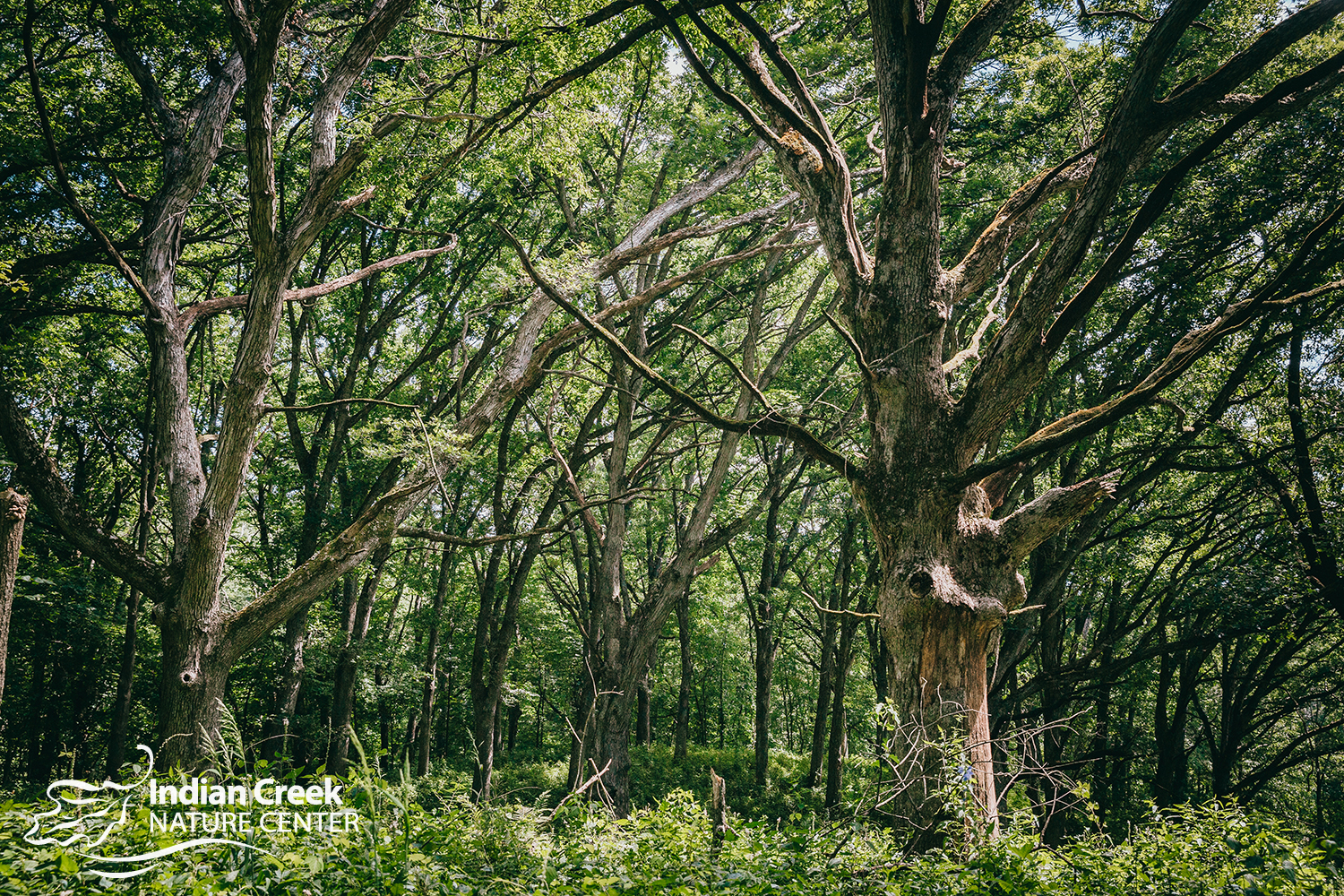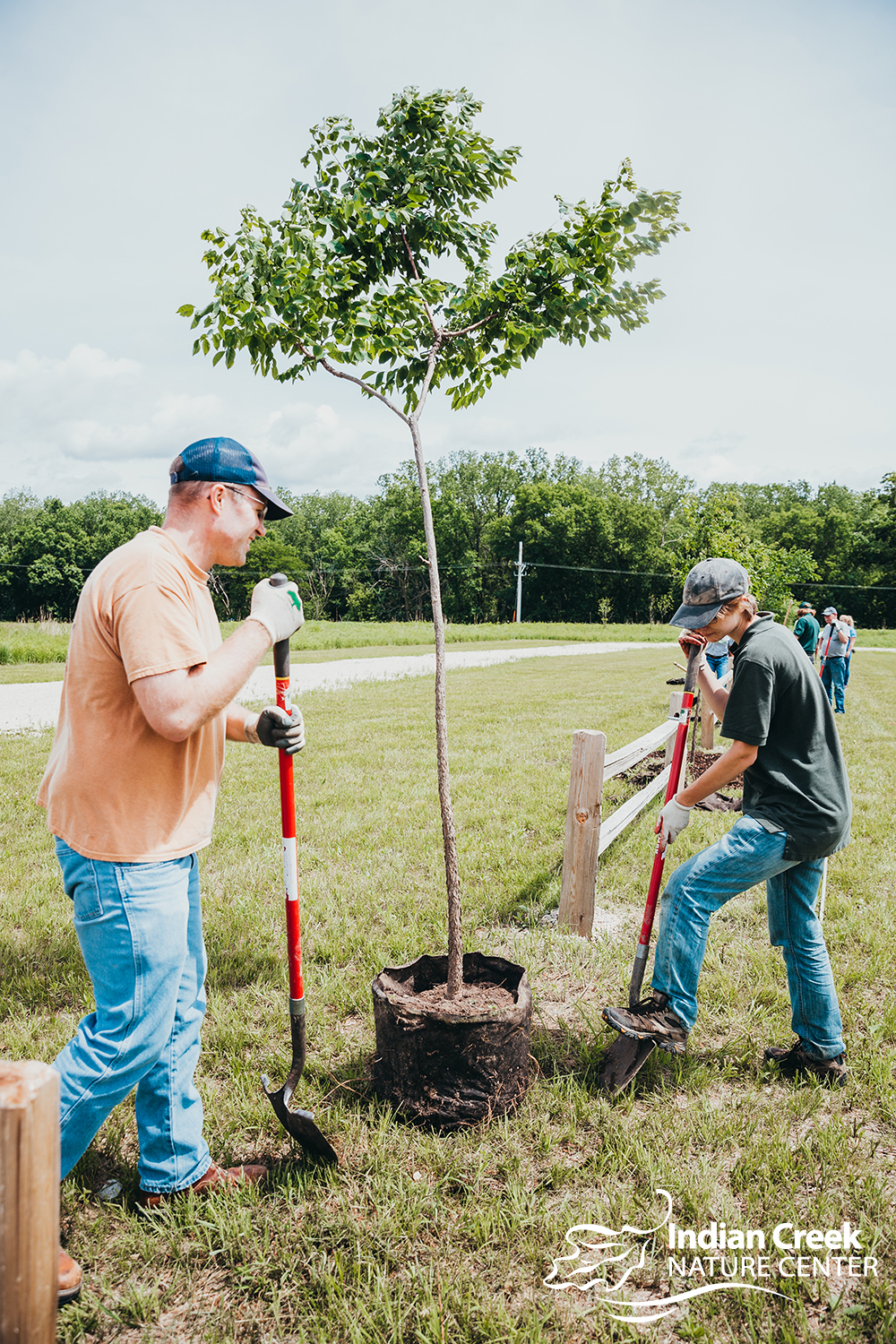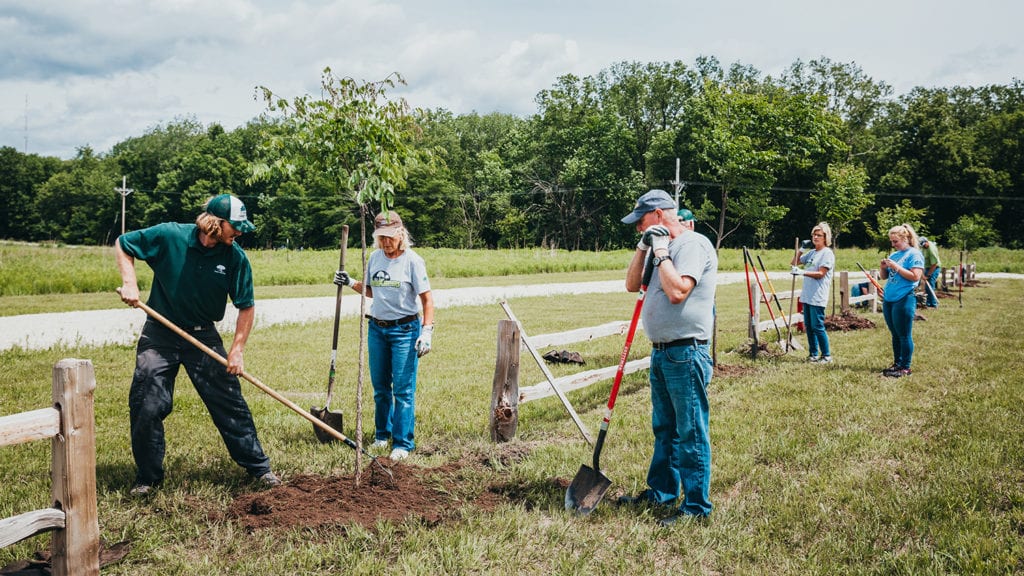Guest Editorial by Mark Fleming, ICNC Volunteer and past member of the Iowa Master Landscape Association
There are many decisions that need to be made when planting in your yard. The time you put into the project will determine how well the plants do and how happy you will be with the results. Not only do plants beautify your yard, they can also raise the value of your home and property as they grow — so it is important to begin with a good plan.
First, consider the timing: the best time to plant seedlings is between March and mid-May, depending on the weather, but fall planting can be successful if done at the right time and with proper care. The best planting takes place in the right location so that the plant will not be under stress and have room to grow to maturity and be healthy through its life. Soil conditions, the amount of light available, the room that is available for it to grow, and even the location on which side of the house or lot will make a difference on the health of the plant.
You also need to decide on which types of plants you want. What will their mature size be? Will those plants over grow your location in time or become stressed because of the location? Select plants that come from quality stock, have been raised in the best possible way to be transplanted and are planted in the proper way to grow healthy over many years. Please consider using native plants if they fit your planting needs.
Click here for a list of native or edible plants we’ve planted at the Nature Center for you to consider.

Native plants — plants that have always grown in Iowa — have advantages over bringing in plants that are meant to be grown in other areas of the country. Native plants sometimes take less care in the future after they are established. Because the plants normally grow here, they have less problems with insects and disease. Some things you need to consider is whether to plant native or new cultivars. There are advantages to considering both choices. Native plants have already proven that they can survive the weather we have in Cedar Rapids. A native plant may get too large or may not do well because it is not the right plant for your location. Please talk to experts to help you make those important decisions.*
It is easy to pick plants from seasonal grocery, drug, and home improvement store locations in the spring — the pricing seems great but they have limited experience and knowledge on what they are selling. It is hard to know where the plants came from and there have even been problems with insects being brought in from out of state and being spread to our area. That is how emerald ash bore spread so fast. This is not to say that they are all bad plants, but you need to be careful with your selection. The knowledge you get from Garden centers or Nurseries may make the difference in the success of your planting project. The Iowa Nursery & Landscape Association, Iowa State University Horticulture department, and the Iowa State University Extension & Outreach service are all wonderful places to gain up-to-date information.
Some important rules for planting trees and shrubs are as follows:

- Dig a hole one and a half times the diameter of the pot or ball of roots.
- Plant the top of the root ball even with the ground.
- Put a ring of dirt around the outside edge of the hole you made, to hold water.
- It is best to use the soil you dug out to plant a new tree with. Soil additives and fertilizers are not recommended at the time of planting.
- Water the plant right away after you plant it. This is very important to settle the dirt and to give the tree a quick drink before moving to another planting.
- You should check that the dirt has not settled and exposed roots to the air, add dirt where needed.
- Stake larger trees that could be moved by the wind. Leave some slack to let the tree have some movement, that allows the tree to develop a stronger trunk.
- Do not fertilize the tree for the first year and after that fertilize the roots with fertilizer spikes that the new roots will grow out too. The stakes should be placed about one foot beyond the outer branches.
- Shade trees should have tree wrap or some other protection before the ground freezes and have it taken off each spring before the leaves come out. This should be done for five years after you plant the tree.
- Watering a new tree can vary depending on soil conditions and the amount of sun and wind it might get. Water every day the first week, every other day the second week. After the first two weeks, water twice a week thru out the first year when the ground is not frozen. This should always be with a slow trickle of water over a long time to do a deep watering.
A plant’s root system needs oxygen, nutrients and water to develop. If you water too much you drive out the oxygen, wash away the nutrients and weaken the plant. Healthy trees keep a balance between what the root system can provide to support the top and what the top can send back down to the roots for nutrients that are stored for future growth. The root system grows even after the leaves are gone in the fall and the plant may put out more leaves in the spring if there are optimum growing conditions in the spring but will drop leaves if they can’t be supported by the root system when the summer stress hits.
*Resources & Experts:
- Iowa State Horticulture
- Iowa State Extension Service
- Sustainable Landscape Solutions
- Iowa Nursery & Landscape Association
- Fleming Nursery
- Prairie Moon Nursery
- Winding Pathways LLC
- Trees Forever
Stay tuned for more information on what, when and how to plant in the coming days. We are working with a number of experts and will be providing regular updates!
We will recover from this disaster, but we cannot do it without your help. Please consider a donation if you are able or sign up to volunteer. As Iowa’s largest and only private non-profit nature center, we do not receive funding from the government. We depend on the generosity of people like you.


